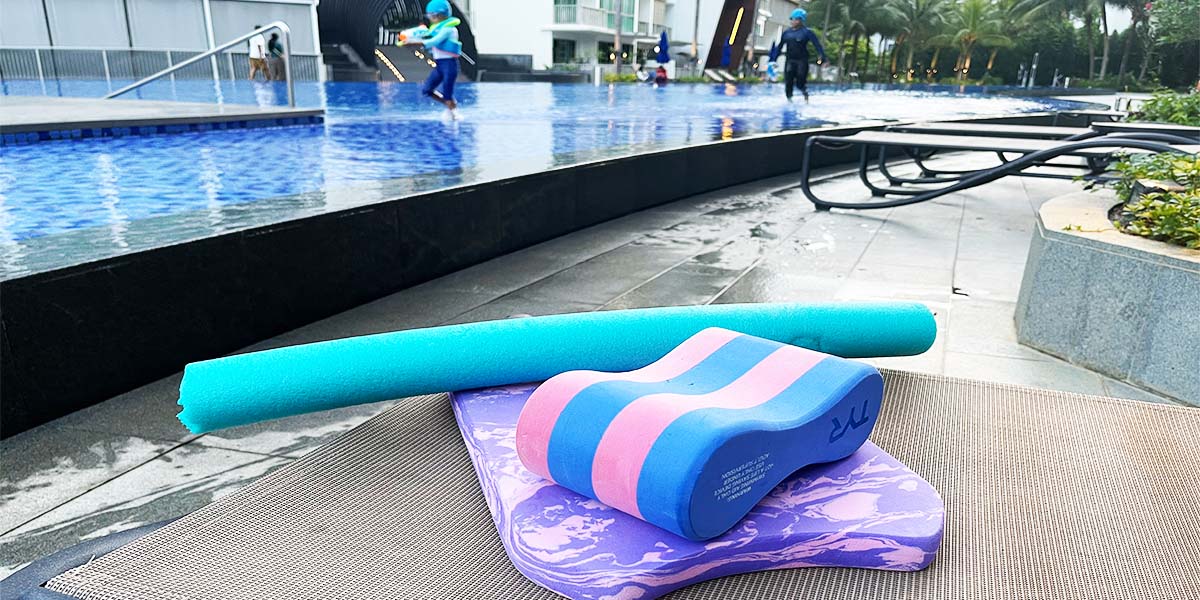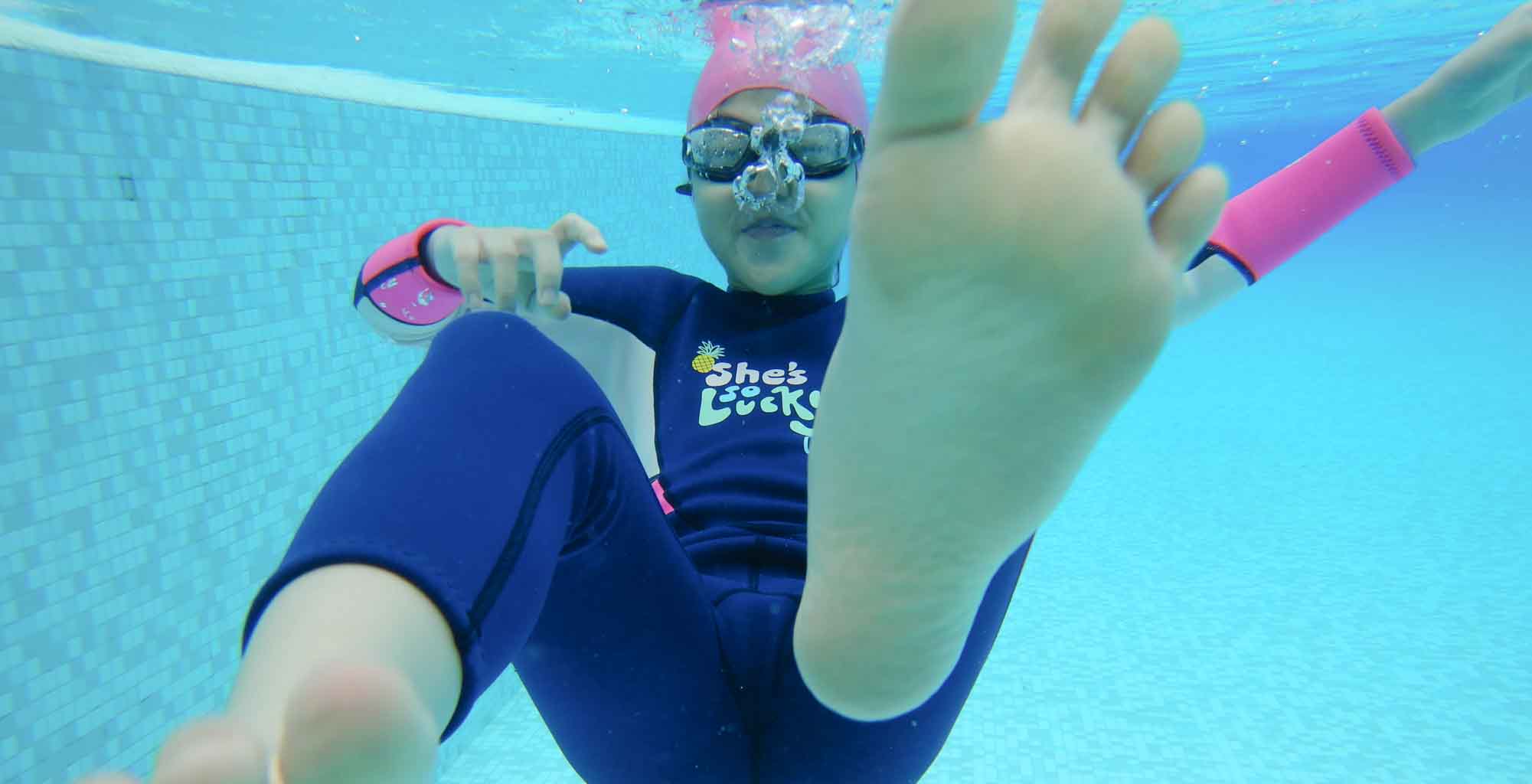10 Things You Must Bring to Swim Lessons

Whatever your swimming level, here are ten essential items to bring to the pool to guarantee you have the best possible experience.
1: SWIMSUIT
It is critical to have a swimsuit that fits appropriately regardless of your age. It should be a close fit; you don’t want any of it to slip off your child’s body.
2: SWIM CAP & GOGGLES
Goggles not only keep chlorine out of your eyes, but they also encourage better technique, which is especially important if your child is new to swimming. A hair band or swim hat will keep your child’s hair out of his or her face if he or she has longer hair.
I’ll go into more detail on prepping swim caps and goggles for swimming classes later. Some venues will demand that every student wear a cap. This keeps hair out of the pool and lowers operational costs. The greater the number of foreign bodies in a pool, the more sanitation is required. Nobody enjoys swimming in a pool and discovering long hair wrapped around their arm. It’s like going through a spider’s web or swimming in seaweed, neither of which is enjoyable.
Some schools may simply require students with long hair to wear caps. Any hair in the eyes or on the face, on the other hand, might make breathing difficult. A turn of the head and the inability to see where you’re going without wearing a swim cap can lead to very poor behaviors, such as flinging their head or breathing forward, that are difficult to overcome.
In a nutshell, unless the teacher has specifically requested that it be removed for water safety activities, any student with hair that will obstruct vision while swimming (that is, any hair that sits below a child’s brows or is longer than around five cm) should wear a cap in classes.
Goggles are an intriguing topic. Goggles were originally designed to protect the eyes. Here are four items that will hurt your eyes:
- The pH is either too high or too low (water is not chemically balanced correctly)
The pH of water indicates how acidic or basic it is. Seven, as a neutral number, can cause eye irritation. The water’s pH should be between 7.2 and 7.8. Getting this balance right can be difficult for pool operators who do not have automatic closure systems, as well as for numerous other reasons that can contribute to the pH constantly shifting.
- Water flow over the eye
This happens as the children get adept at maneuvering through the water. They could be propelling themselves through the water while keeping their eyes open. The flow of water across the eye substitutes the tears that lubricate the eyes and dries up the surface, creating irritation.
- Temperature
Temperature is important since the temperature of the water rarely corresponds to the temperature of our eyes. Water affects swimmers’ eyes by causing them to dry out, become red, and irritated, regardless of temperature, flow, or pH.
- Chloramines
It is important to note that this is not chlorine. You would not be in the water if the chlorine levels were too high! However, the chlorine odor you may be accustomed to is caused by free chlorine in the pool. There isn’t enough chlorine!
Two chlorine readings are recorded when pool water is tested: total chlorine (the total quantity of chlorine in the pool) and free chlorine (the amount of chlorine available to sanitize the water).
As chlorine degrades and attaches to the agents it is sanitizing (urine, bacteria, algae, make-up, and sunscreen, for example), it transforms into a chloramine, which gives off the unpleasant chlorine odor.
As chloramines accumulate in the pool, and if the facility is not appropriately ventilated, the odor can become highly irritating, causing users to have eye irritation. The most effective technique to eliminate chloramines is to boost chlorine levels in order to oxidize the chloramines.
3: SWIMMING DIAPER
Swim diapers or reusable swim diaper covers are required at all YMCA pools for any child who is not toilet trained.
4: SHOWER ACCESSORIES
The chlorine in the pool frequently dries up your skin. Remember to pack shower necessities such as shampoo, conditioner, body wash, moisturizer, and a wet brush.
This brush easily detangles hair and is especially good for your child’s hair.
5: WATER
Keep in mind that swimming is a kind of exercise. Bring a water bottle with you to keep your toddler hydrated.
6: TOWEL
Bring your own towel to the pool deck. It will keep your youngster warm after he or she has finished his or her instruction. It also prevents water puddles, which are a tripping danger.
7: LOCK
Remember to bring a combination or key lock to safeguard your personal belongings in the locker room. Lock it up if you adore it! Keep valuables such as your mobile phone, handbag, and wallet in a secure and dry location.
8: SNACK
Children become hungry after a swim session. Bring a nutritious snack for them to enjoy.
**Remember that food is not permitted in Singapore’s public pool areas.
9: FLIP-FLOPS
When strolling from the locker room to the pool deck, wear shoes that are simple to slip on and off. Slipping can be avoided by wearing suitable flip-flops or water shoes.
10: GYM BAG
A good bag in which to store all of your belongings is required. Pack a comfy garment for your youngster to change into after the class. Plastic bags are offered at many Y’s for your wet swimwear and towel. Using them will keep your bag dry.


